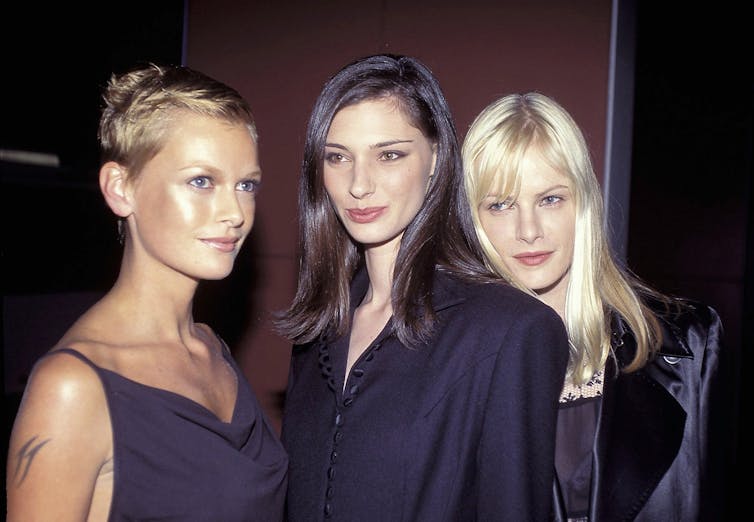 |
| Striking a pose in a three-piece suit in Florence, Italy at the opening of Pitti Uomo. edition 107. Photograph and cover picture by Andrea Heinsohn |
The cobblestone streets of Florence transform into a
kaleidoscope of sartorial splendor as Pitti Uomo opens its doors for the
Autumn/Winter 2025-2026 season. This iconic event, showcasing luxury and artisanal menswear, has become a cultural phenomenon
where fashion doesn’t just reside within exhibition halls but spills onto the
city’s historic piazzas, cafés, and alleyways. Story by Antonio Visconti. Photography by Andrea Heinsohn
 |
Bold and colourful suiting is a staple of Pitti Uomo "peacocks' in Florence |
PITTI UOMO, much like Florence
itself, is a meeting point of heritage and innovation, and this year’s streetstyle set the tone for what is shaping up to be a dynamic season in menswear.
No event embodies the Italian art of effortless
elegance quite like this tradeshow with 790 different designers and brands on display at the Fortezza da Basso.
Outside, the streetstyle stars, often referred to as Pitti
peacocks, make bold and charismatic statements with their attire. Editors,
stylists, influencers, and celebrities all converge in Florence, each
showcasing a personal interpretation of the season’s trends, often infused with meticulous Italian tailoring.
Think impeccably tailored double-breasted blazers paired
with relaxed wool trousers or sharply cut houndstooth coats offset by chunky
sneakers. Some embraced the resurgence of vintage aesthetics, sporting
wide-legged trousers, velvet blazers, and bold geometric prints reminiscent of
the 1970s.
Others leaned into minimalism, creating a visual contrast with muted
tones of taupe, camel, and charcoal gray juxtaposed with clean silhouettes.
Pitti Uomo men understand the transformative power of
accessories, and this season, they didn’t disappoint. Wide-brimmed fedoras,
intricately patterned silk scarves, and bold statement sunglasses were seen
adorning many outfits, adding layers of personality to already polished looks.
Footwear also took centre stage, with an array of options ranging from classic
brogues and loafers to modern Chelsea boots and avant-garde sneakers.
Leather designs, another hallmark of Italian craftsmanship,
were on full display. Many carried structured handbags or oversized tote bags,
signaling a shift toward practical yet stylish daily essentials. The prominence
of jewellery ~ chunky rings, layered chains, and vintage watches ~ underscored the
growing importance of accessories in elevating a man’s wardrobe.
Outside, the streetstyle stars, often referred to as Pitti peacocks, make bold and charismatic statements with their sartorial savoir faire
 |
Beautifully tailored, sleek, wool overcoats were highlights at Pitti Uomo during wintry days
|
Florence’s chilly January air provided the perfect backdrop
for displayin this season’s outerwear trends. Long wool overcoats in bold
plaids, herringbone patterns, and textured fabrics dominated the scene,
demonstrating how tailoring remains at the heart of menswear.
Quilted jackets and puffer coats added a more casual flair,
particularly in striking colors like deep burgundy, olive green, and even
metallic finishes. Capes and ponchos ~ an unexpected but welcome addition~ offered
a dramatic silhouette, blending functionality with a sense of theatricality.
These pieces weren’t just outerwear; they were statements, capturing the
imagination of onlookers and streetstyle photographers alike.
While Pitti Uomo is rooted in tradition, it has also
become a space where self-expression reigns supreme. Attendees often blend the
old with the new, combining classic tailoring with streetwear influences or
experimenting with gender-fluid silhouettes. Oversized blazers were paired with
cropped trousers, while knitwear in unconventional patterns added a touch of
whimsy to more formal ensembles.
Notably, this year saw a celebration of texture: plush
velvets, smooth silks, and chunky knits were layered with precision, creating
outfits that were as tactile as they were visually striking. This interplay of
materials, colors, and proportions underscored a key takeaway from Pitti
Uomo: menswear is becoming increasingly diverse, experimental, and
boundary-pushing.
The trends showcased here often serve as a bellwether for global menswear, trickling down from luxury brands to high-street retailers
 |
The crowds gathered at the Fortezza da Basso to see the designers on show |
Pitti Uomo’s influence extends far beyond the medieval
streets of Florence. The trends showcased here often serve as a bellwether for
global menswear, trickling down from luxury brands to high-street retailers.
This season, the emphasis on individuality, craftsmanship, and the merging of
traditional and contemporary aesthetics suggests a continued shift towards
personal style over prescriptive fashion rules.
Celebrities and influencers play a significant role in
amplifying the event’s reach. Their curated looks, captured by street-style
photographers, quickly find their way to social media, sparking conversations
and inspiring audiences worldwide. Whether it was a subtle nod to
sustainability through vintage pieces or bold experimentation with avant-garde
designs, their outfits underscored how Pitti Uomo continues to be a melting pot
of creativity.
With this new 107 edition of Pitti Uomo, one
thing is clear: Florence remains at the heart of the menswear conversation. The
Autumn/Winter 2025-2026 season has set a high standard, showcasing a harmonious
blend of tradition, innovation, and personal expression.
From the grandeur of the city’s historic architecture to the
dynamic street style that fills its squares, Pitti Uomo encapsulates the spirit
of modern menswear. It’s more than a trade show; it’s a cultural moment, a
celebration of artistry, and a testament to the enduring appeal of fashion as a
means of storytelling. The Pitti Uomo peacocks may return to their roosts, but
their sartorial influence will linger, shaping trends and inspiring wardrobes
for seasons to come.
Scroll down to see more highlights from Pitti Uomo number 107 Autumn/Winter 2025-2026



























































